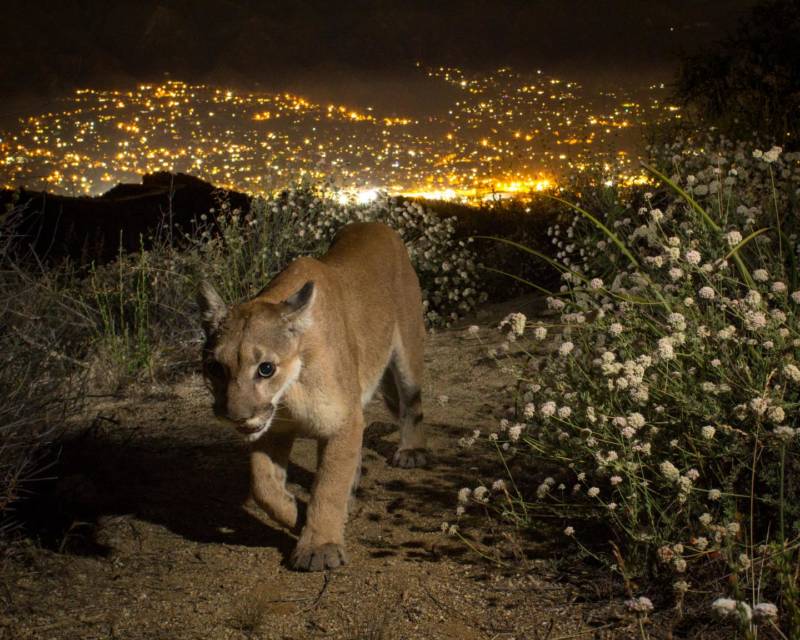Pumas once dominated mountain ranges along the Central Coast and in the southern end of the state. But according to a study published in March, researchers, relying on observations, DNA and modeling data, predict that at least some populations could disappear entirely within a half century.
That study crystallized the concept of an “extinction vortex” in the debate over mountain lion viability. The vortex is created by two interlocking conditions: a well-documented decline in genetic diversity in some subpopulations, and the dearth of mountain lions in the mating pool.
Male mountain lions require broad swaths of territory to roam. Their home ranges can be greater than 200 miles, and they don’t like to share with other males. Over the course of the past century, the greatest threats they’ve faced have been from humans’ steady encroachment into the wildland-urban interface. That requires roads that dice up open space, and the cars that drive on those roads hit cougars trying to cross.
Applied poisons like rodenticide and insecticide are also sickening mountain lions, building up in them as they eat smaller prey.
“It makes it much harder for them to stay alive, and then also reproduce,” said Yap.
Human development can also lead to fire, which diminishes the utility of open space for the animals. Development also makes it easier for the lions to get lost or trapped, ending up in Pleasanton parking lots and Saratoga backyards.
The recommendations of wildlife officials and the ultimate decision are meant to be grounded in science. But Yap acknowledges that the breadth of potential change means that developers and property owners who might be affected may oppose the petition.
Right now, state officials grant mountain lions some consideration as a “specially protected species,” which limits how they can be hunted. But that designation doesn’t require actions to protect them or their habitat. Yap says if the petition is approved, things would change. “There would have to be resources put into looking at connectivity,” she said. “Do we build a wildlife crossing here? Should we avoid that area and build somewhere else?”
Designating six isolated groups of mountain lions as a single threatened unit would likely limit new construction and change how state agencies, like Caltrans, plan and build infrastructure. Complicating matters is the fact that mountain lions living elsewhere, like in the Sierra Nevadas and the far northern part of the state, don’t appear to be in as much trouble as their more southern counterparts — though without an accurate statewide population count, it’s hard to tell. While California estimates a “stable” population of 4,000-6,000 mountain lions, an official count hasn’t been conducted in decades.
Lawyers for the environmental groups say the Fish and Game Commission must initially ask scientists and staffers at the Department of Fish and Wildlife to determine whether the petition is viable, and then whether a designation may be warranted. That preliminary determination is expected by the end of the year; a final decision could follow a year after that.

